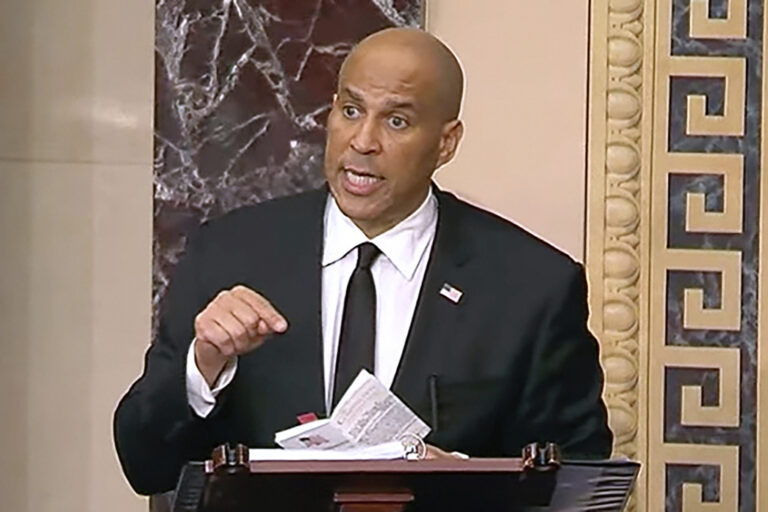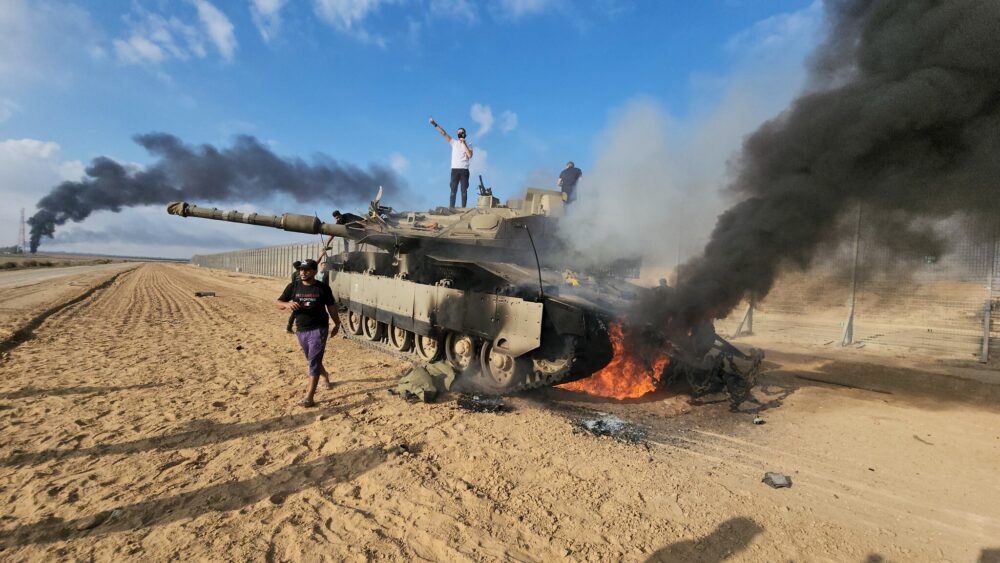Hurricane Ida blasted ashore Sunday as one of the most powerful storms ever to hit the U.S., rushing from the Louisiana coast toward New Orleans and one of the nation’s most important industrial corridors.
The powerful Category 4 storm with winds of 150 mph (230 kph) hit on the same date Hurricane Katrina ravaged Louisiana and Mississippi 16 years earlier, coming ashore about 45 miles (72 kilometers) west of where Category 3 Katrina first struck land.
The rising ocean swamped the barrier island of Grand Isle. The hurricane was churning through the far southern Louisiana wetlands, with the more than 2 million people living in and around New Orleans and Baton Rouge up next.
“This is not the kind of storm that we normally get. This is going to be much stronger than we usually see and, quite frankly, if you had to draw up the worst possible path for a hurricane in Louisiana, it would be something very, very close to what we’re seeing,” Gov. John Bel Edwards told The Associated Press.
People in Louisiana woke up to a monster storm after Ida’s top winds grew by 45 mph (72 kph) in five hours as the hurricane moved through some of the warmest ocean water in the world in the northern Gulf of Mexico.
Wind tore at awnings and water spilled out of Lake Ponchartrain in New Orleans before noon Sunday. Officials said Ida’s swift intensification from a few thunderstorms to a massive hurricane in just three days left no time to organize a mandatory evacuation of the city’s 390,000 residents. Mayor LaToya Cantrell urged residents to leave voluntarily. Those who stayed were warned to prepare for long power outages amid sweltering heat.
Vital: If you live in SE Louisiana and you think you've rode out the strongest of storms – you haven't. #Ida will be the most intense hurricane you have ever experienced (stronger winds than Katrina). Like a huge tornado. Take every precaution to protect your life and family now. pic.twitter.com/bSj8jcxkMh
— Jeff Berardelli (@WeatherProf) August 29, 2021
“This is the time. Heed all warnings. Ensure that you shelter in place. You hunker down,” Cantrell told a news conference.
Nick Mosca, out walking his dog Sunday morning before the storm hit, said he’d like to have been better prepared.
“But this storm came pretty quick, so you only have the time you have,” Mosca said.
Ida’s 150 mph winds tied it for the fifth-strongest hurricane to ever hit the mainland U.S.
Stunning video taken from inside the eye of #Ida this morning by the NESDIS Ocean Winds Research team during a flight on the @NOAA_HurrHunter P3 aircraft @NOAASatellites pic.twitter.com/sjt970Yeiq
— National Hurricane Center (@NHC_Atlantic) August 29, 2021
Those winds came through Port Fourchon, where boats and helicopters gather to take workers and supplies to oil platforms in the ocean and the oil extracted starts its journey toward refineries. The port handles about a fifth of the nation’s domestic oil and gas, officials said.
Edwards said he watched a live video feed from the port area as Ida came ashore.
“The storm surge is just tremendous. We can see the roofs have been blown off of the port buildings in many places,” Edwards told the AP.
Along with the oil industry, Ida threatened a region already reeling from a resurgence of COVID-19 infections, due to low vaccination rates and the highly contagious delta variant.
Storm surge flooding coming in waves in #Gulfport, Mississippi. 5-8’ of #stormsurge flooding expected in Gulfport. @weatherchannel continues around the clock coverage of #Ida 🌀 pic.twitter.com/EGIyUukhaB
— Justin Michaels (@JMichaelsNews) August 29, 2021
New Orleans hospitals planned to ride out the storm with their beds nearly full, as similarly stressed hospitals elsewhere had little room for evacuated patients. And shelters for those fleeing their homes carried an added risk of becoming flashpoints for new infections.
Forecasters warned winds stronger than 115 mph (185 kph) were expected soon in Houma, a city of 33,000 that supports oil platforms in the Gulf.
Gulfport, Mississippi, to the east of New Orleans, was seeing the ocean rise and heavy rain bands. Empty lots where homes stood before Katrina are still common in coastal Mississippi, and Claudette Jones evacuated her home to the east of Gulfport as waves started pounding the shore.
“I’m praying I can go back to a normal home like I left,” she said. “That’s what I’m praying for. But I’m not sure at this point.”
Comparisons to the Aug. 29, 2005, landfall of Katrina weighed heavily on residents bracing for Ida. Katrina was blamed for 1,800 deaths as it caused levee breaches and catastrophic flooding in New Orleans and demolished oceanfront homes in Mississippi. Ida’s hurricane force winds stretched 50 miles (80 kilometers) from the storm’s eye, or about half the size of Katrina.
Ramsey Green who is in charge of infrastructure for the city of New Orleans emphasized before the worst of the storm that when it comes to protections against storm surge, the city is in a “very different place than it was 16 years ago.”
Water should not penetrate the levee system, which has been massively overhauled since Katrina. But if forecasts of up to 20 inches (50 centimeters) of rain come true, the city’s underfunded and neglected network of pumps, underground pipes and surface canals likely can’t keep up, Green said.
“It’s an incredibly fragile system,” he said.
About 150,000 customers were already out of power as of midday, according to PowerOutage.US, which tracks outages nationwide.
Hurricane Ida nearly doubled in strength, going from an 85 mph storm to a 150 mph storm in just 24 hours, which meteorologists called “explosive intensification.”
“Ida will most definitely be stronger than Katrina, and by a pretty big margin,” said University of Miami hurricane researcher Brian McNoldy. “And the worst of the storm will pass over New Orleans and Baton Rouge, which got the weaker side of Katrina.”
The region getting Ida’s worst could face devastation to its infrastructure, which includes petrochemical sites and major ports, said Jeff Masters, a former National Oceanic and Atmospheric Administration hurricane hunter meteorologist and founder of Weather Underground.
The state’s 17 oil refineries account for nearly one-fifth of the U.S. refining capacity and its two liquefied natural gas export terminals ship about 55% of the nation’s total exports, according to the U.S. Energy Information Administration. Louisiana is also home to two nuclear power plants, one near New Orleans and another about 27 miles (about 43 kilometers) northwest of Baton Rouge.
The Interstate 10 corridor between New Orleans and Baton Rouge is a critical hub of the nation’s petrochemical industry, lined with oil refineries, natural gas terminals and chemical manufacturing plants. Entergy, Louisiana’s major electricity provider, operates two nuclear power plants along the Mississippi River.
President Joe Biden approved emergency declarations for Louisiana and Mississippi ahead of Ida’s arrival.
(AP)











